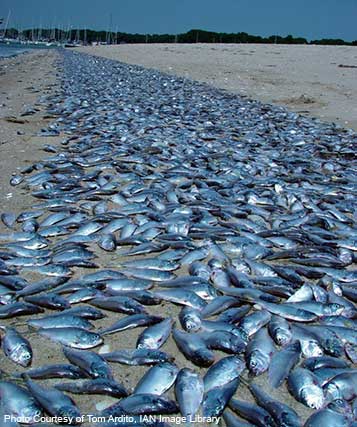 What are the effects of hypoxia on animals that live on the bottom?
What are the effects of hypoxia on animals that live on the bottom?
In general, the community of animals living on or near the bottom is radically altered by hypoxic conditions. Strong swimming animals generally leave hypoxic regions to enter oxygen-rich waters, while more sedentary animals (like worms, clams, barnacles, and snails) tend to suffocate. Clams, oysters and other bivalves can survive for hours to days by closing their shells, ceasing to filter water, and going into a dormant state in hopes that normal oxygen conditions will soon improve. However, they too will die if hypoxia lasts long enough. With initial lowering of oxygen concentrations, worms and other animals that burrow deep in the mud will migrate closer to the surface in search of more oxygen. This makes them more vulnerable to fish that are capable of surviving temporarily in low oxygen conditions. Similarly, when fish and mobile invertebrates that rely on hiding from predators along the bottom swim out of a hypoxic area in search of more oxygen, they generally become more vulnerable to larger fish that will eat them. In some cases, fish may leave an area completely and never return when the oxygen conditions improve. However, most swimming animals return when normal oxygen concentrations are restored.
When hypoxia on the bottom becomes widespread throughout a coastal region, fish and crabs have nowhere to go, unable to escape low oxygen conditions. As a result fish kills can occur, when we see dead fish washed up on beaches. In addition, crabs sometimes come crawling out of the water. Fishermen call these events “Crab Jubilees” because the delictable critters are easy to harvest when they are scooped up directly from the beach!